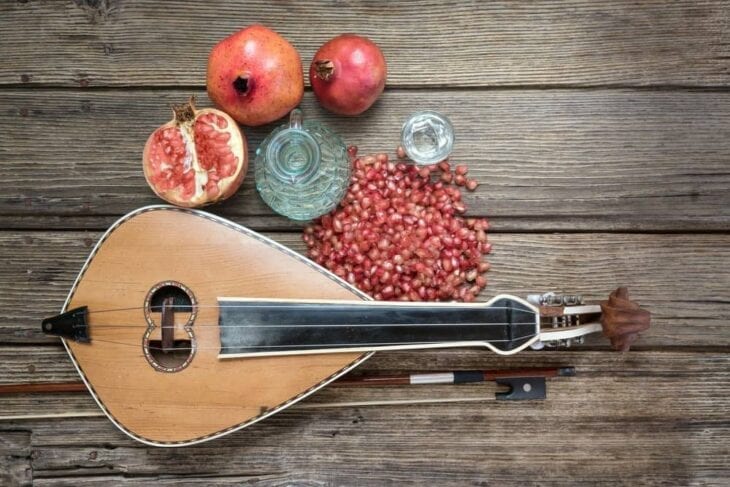Cretan Music: Songs, Festivals, Dances and Traditions
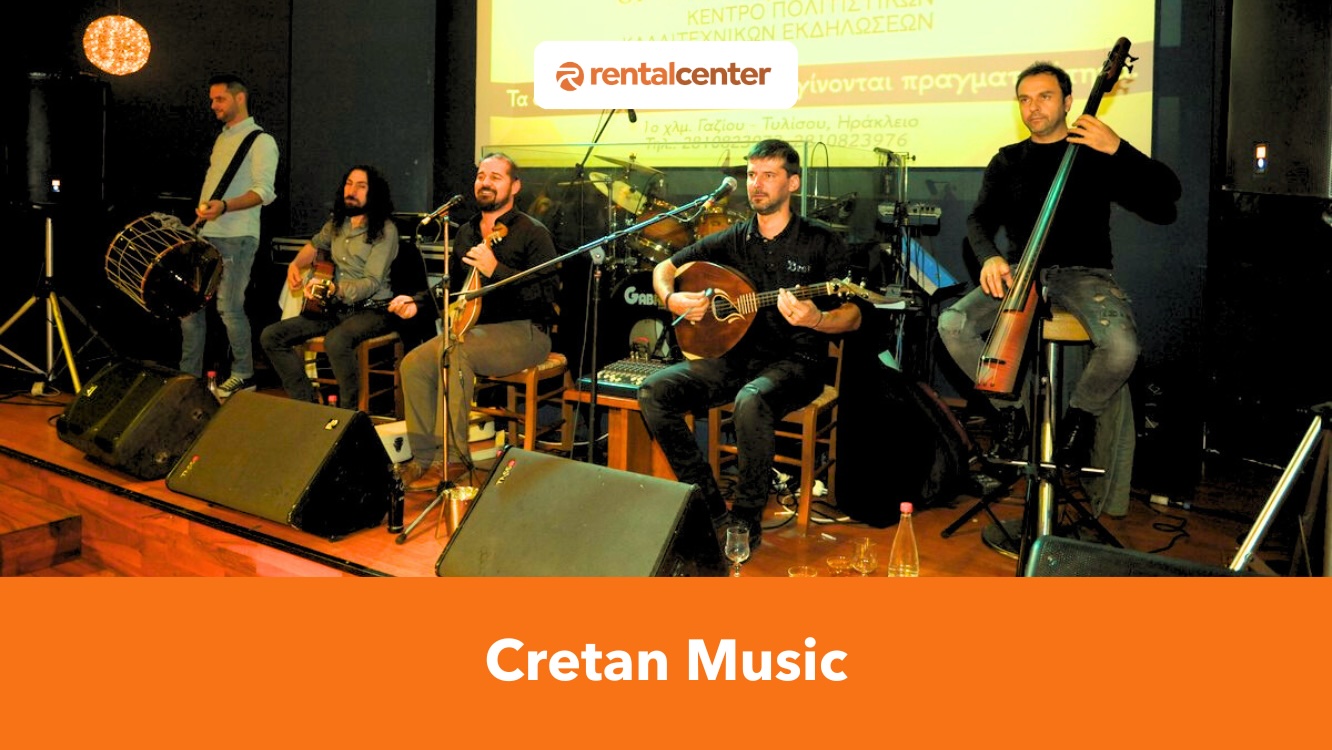
Cretan music forms a core part of the island’s identity, deeply tied to its history, traditions, and emotions. Mantinades and Ritika reflect themes of love, heroism, and struggle. They are often performed at ceremonies, weddings, and festivals. Instruments like the Lyra, laouto, askomandoura (bagpipe), and thiaboli (flute) create a distinct sound in Cretan music. Modern Cretan music incorporates global genres like rock and jazz.
Popular songs like Erotokritos and Agrimia Ki Agrimakia Mou remain culturally known. Crete hosts music festivals like the Houdetsi, Matala Beach, Rokkas, and Chania Rock Festival. These events showcase traditional Cretan music alongside diverse genres in settings, promoting cultural exchange and creativity. Institutions such as the Labyrinth Musical Workshop, the Museum of Traditional Music Instruments “Thirathen”, and the School of Music and Optoacoustic Technologies preserve and advance Cretan music. They support education, innovation, and global appreciation for the island’s musical heritage.
What is the Importance of Music for Cretans?
Music is vital to Cretan culture, reflecting the island’s identity, history, and emotions. It preserves heritage through traditional forms like mantinades and rizitika, expressing love, heroism, and struggle. Integral to ceremonies, festivals, and mourning, music fosters community bonds and evolves as a living art through its improvisational nature. Traditional songs such as mantinades (improvised rhyming couplets) and rizitika (narrative songs) reflect their joys and sorrows. Music fosters community at festivals (panigiria), where locals sing, dance, and connect. Its improvisational nature allows musicians to express personal emotions, evolving as a living art while staying rooted in tradition.
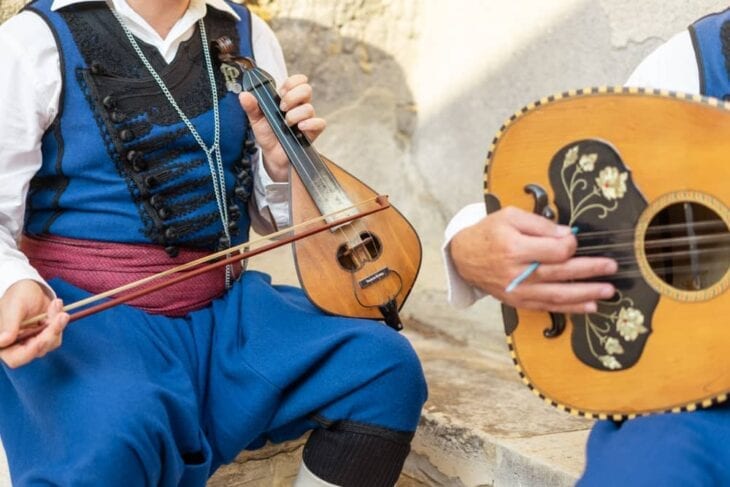
What is the Traditional Music of Crete?
Cretan traditional music centers around the lyra, a three-stringed bowed instrument, accompanied by the laouto and other instruments like the askomandoura and thiaboli. It is enriched by poetic forms such as mantinades, which convey emotions, and rizitika, narrating history. Dances like Pentozalis and Syrtos complement the music, embodying Cretan heritage.
The lyra produces melancholic yet uplifting melodies and serves as the heart of Cretan music. It is often accompanied by the laouto (Cretan lute). Other instruments, such as the askomandoura (bagpipe), mandolin, and thiaboli (flute), contribute to its distinct sound. Mantinades improvised to convey emotions or tell stories, and rizitika, narrating history or heroic themes, highlight Cretan poetic traditions. The traditional music is often paired with dances like the energetic Pentozalis and slower Syrtos.
What Instruments Are Used in Cretan Music?
Cretan music is a vital part of the culture, deeply connected to its history, traditions, and way of life. Central to this musical tradition are unique instruments that define its distinct sound. Below is a list of the primary instruments used in Cretan music:
- Cretan Lyra: The Lyra is the most iconic instrument of Crete. It is a three-stringed, pear-shaped bowed instrument traditionally held upright on the musician’s lap. The lyra produces cynical yet tuned melodies central to Cretan folk music, especially at weddings and festivals. Its sound is profoundly emotional and often accompanies mantinades (improvised rhymes). Typically made from wood like maple or plane, the Cretan lyra symbolizes the center of Cretan musical tradition.

- Laouto (Lute): The Laouto is a long-necked lute with four double strings, played with a plectrum. It provides rhythmic support in Cretan music, often accompanying the lyra. It is known for warm and resonant tones, has evolved, and is now widely used across Crete. In some regions, it also plays melodic roles alongside other instruments.
- Askomandoura (Bagpipe): The Askomandoura is a traditional bagpipe with a goat-skin pouch and wooden pipes. It produces a distinctive, resonant sound in rural Crete. Although historically significant, it is now rare and blends with other instruments in traditional orchestras.
- Thiaboli (Flute): The thiaboli, also known as Souravli, is a simple wind instrument resembling a flute. It is made from materials like reed or wood, with thickness and length determining its tone. The thiaboli adds quality to Cretan music and is often handmade by the musicians. Its light, airy sound complements stringed instruments in traditional performances.
How is Modern Music in Crete?
Modern Cretan music combines tradition with contemporary influences, integrating genres like jazz, rock, and world music. Traditional forms such as mantinades and rizitika remain central, and the Lyra and laouto dominate performances, often paired with new instruments or electronic elements to produce innovative sounds. Improvisation plays a crucial role in adapting traditional melodies to modern styles. Artists like Ross Daly and Psarantonis have connected Cretan music with global traditions, while festivals and music clubs (kentra) keep these traditions alive for younger generations.
What kind of Music Is Popular in Crete?
Traditional Cretan music, including mantinades and Ritika, is highly popular at festivals, weddings, and local events. Modern artists blend Cretan sounds with rock, jazz, and Mediterranean folk, while pop and electronic music appeal to younger audiences in urban areas. Crete’s music culture balances tradition and modern influences effectively.
Songs like mantinades (improvised rhyming couplets) and Ritika (narrative a cappella songs) are still widely performed. There is also a growing appreciation for modern adaptations of these traditional forms. Contemporary artists blend traditional Cretan sounds with other genres like rock, jazz, and Mediterranean folk music. Global music styles, such as pop and electronic, have gained popularity among younger audiences in Crete’s urban areas.
What are the Popular Songs in Crete?
Popular Cretan songs narrate love, heroism, and nature while celebrating community and resilience. These songs are performed at festivals, weddings, and gatherings. Below is a list of some of the most iconic and popular songs in Cretan music.
- Erotokritos: Erotokritos, written by Vitsentzos Kornaros during the 17th century, narrates the love story of Erotokritos and Aretousa through mantinades, accompanied by the lyra and laouto, highlighting themes of love, honor, and resilience. Agrimia Ki Agrimakia Mou, a rizitiko popularized by Nikos Xylouris, celebrates the freedom fighters who hid in Crete’s mountains.
- Zorba the Greek Syrtaki Song: Zorba the Greek Syrtaki Song, composed by Mikis Theodorakis, symbolizes Greek culture globally and is widely performed in Crete despite its non-Cretan origins. Voskaroudaki Amoustako celebrates rural life and has been modernized by Giannis Haroulis to combine traditional and contemporary sounds.
- Rizitika: Rizitika songs are performed in a cappella, and heroic or historical events are narrated. They are often categorized as tis stratas (road songs) or tis tavlas (table songs). Pentozalis ties to Crete’s revolutionary history with a fast rhythm that symbolizes freedom and unity.
- Mikri Mou Lemonia: Antonis Martsakis performs Mikri Mou Lemonia, which celebrates love and nature and features traditional instruments like the lyra and laouto. Foustalieris, associated with Stelios Foustalieris, belongs to the tabachaniotika genre and reflects urban themes of love and grief.
- Lousakies: Lousakies, a syrto dance song performed at festivals, showcases improvisation while maintaining folk roots. Pacharde, a modern creation by Babel Trio, blends traditional Cretan music with rock elements using an electric laouto, demonstrating the innovative spirit of younger generations while respecting cultural traditions.
What is the Best Cretan Music Playlist?
The best Cretan music playlist includes traditional Cretan melodies with lyra and laouto as central instruments, featuring iconic artists like Nikos Xylouris, Giannis Haroulis, and Antonis Martsakis. Find below a list of the best Cretan Music Playlist.
- Erotokritos: Erotokritos is a classic Cretan epic poem written in the 17th century by Vitsentzos Kornaros. It tells the love story of Erotokritos and Aretousa, symbolizing themes of love, honor, and resilience. It is often performed with the lyra and laouto, and this piece is a cornerstone of Cretan musical tradition.
- Syrtos of Rodinos: Syrtos of Rodinos is an instrumental medley of syrta melodies recorded by legendary lyra player Andreas Rodinos in 1933. These melodies accompany the traditional syrtos dance and are among the few recordings left by Rodinos, who tragically passed away at age 22.
- Chalepianos Manes: Chalepianos Manes is a nostalgic melody recorded in the early 20th century. This song reflects themes of exile and longing for home. It resonated deeply with emigrants from Crete, offering a heartfelt connection to their homeland.
- Kondilies – Pentozali: Kondilies – Pentozali is a medley that begins with kondilies (short melodic themes) and transitions into the Pentozali, a fast-paced jumping dance originating in Western Crete. Its lyrics express themes of homesickness and resilience in foreign lands.
- Mikri Mou Lemonia (My Little Lemon Tree): Antonis Martsakis performed Mikri Mou Lemonia, a cheerful traditional song that celebrates love and nature. Its bright melody, accompanied by the Lyra and laouto, makes it a favorite at weddings and festive gatherings.
- Agrimia Ki Agrimakia Mou: Nikos Xylouris popularized Agrimia Ki Agrimakia Mou in the 1970s. It is a powerful rizitiko song commemorating the freedom fighters hiding in Crete’s mountains during resistance struggles. Its lyrics embody the Cretan people’s pride, defiance, and resilience.
- Pentozalis: Pentozalis is one of Crete’s most iconic dance songs, closely tied to the island’s revolutionary history. Its lively rhythm accompanies the energetic Pentozali dance, symbolizing freedom, unity, and celebration.
- Maleviziotis: Maleviziotis is a traditional dance song that features a fast-paced rhythm that complements the Maleviziotis dance, known for its quick and dynamic footwork. It highlights the energy and vitality of Cretan music and dance.
- Voskaroudaki Amoustako (Young Shepherd): Voskaroudaki Amoustako is a traditional song celebrating rural life in Crete. Modern renditions by artists such as Giannis Haroulis have renewed this song’s popularity, blending tradition with contemporary musical influences.
- Foustalieris: Foustalieris is associated with Stelios Foustalieris; this urban-style song reflects themes of existential grief. It belon the mess to the tabachaniotika genre, which thrived in Cretan cities during the early 20th century and offers a more introspective take on Cretan music.
What are the Popular Artists of Crete?
Popular artists of Crete include Nikos Xylouris, known as the “Archangel of Crete” for his powerful voice and symbolic resistance music, and Psarantonis, his brother, famous for his lyra artistry and expressive singing. Thanassis Skordalos and Kostas Mountakis are iconic lyra players who shaped Cretan music with their mastery. Ross Daly integrates global influences into traditional Cretan sounds, while Giannis Haroulis blends modern genres like rock with Cretan traditions. Vasilis Skoulas, Haralambos Garganourakis, and Stelios Foustalieris further contribute to Crete’s rich musical legacy with distinctive styles and innovations.
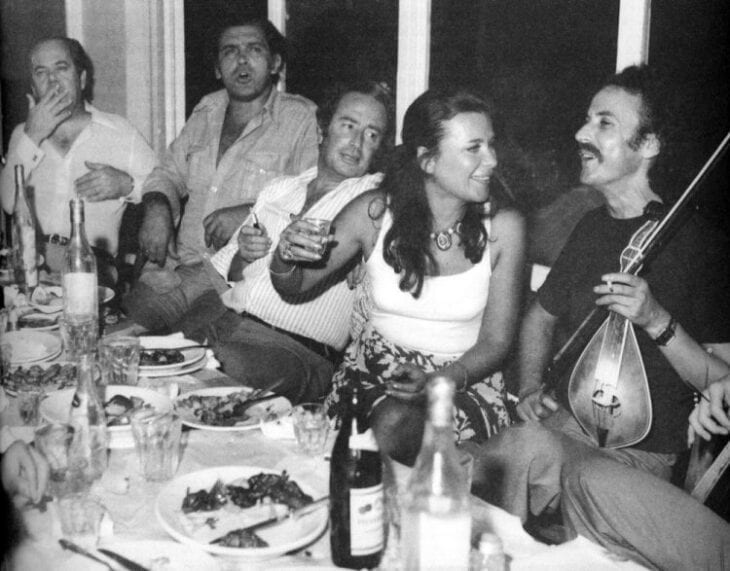
Nikos Xylouris, the “Archangel of Crete”, became a legendary figure for his powerful voice and renditions of rizitika songs, symbolizing resistance during Greece’s military dictatorship. His younger brother, Psarantonis, earned recognition for his unique lyra playing style and deep, expressive voice.
Thanassis Skordalos, a virtuoso lyra player, recorded over 150 Cretan music classics during his decades-long career. Kostas Mountakis transformed lyra playing with innovative techniques while maintaining Cretan traditions. Both Cretan Musicians are pillars of Cretan music.
Ross Daly, an Irish-born musician, mastered the lyra and traditional instruments after settling in Crete, blending Cretan music with global influences to expand its international reach. Giannis Haroulis fuses traditional Cretan sounds with modern rock and folk genres, appealing to younger audiences while safeguarding the island’s musical heritage.
Vasilis Skoulas, a singer and lyra player from Anogia, has sustained a career spanning over 40 years. Haralambos Garganourakis, celebrated for his heartfelt performances, is deeply cherished in Crete. Stelios Foustalieris (1911–1992), linked to the tabachaniotika genre, enriched Cretan music with urban influences through his boulgari expertise.
What are the Music Bands in Crete?
The music bands in Crete include Chainides, known for blending traditional lyra and laouto with poetic lyrics; Xylouris White, merging Cretan music with experimental rock; Babel Trio, innovating with electric laouto in progressive rock; Balothizer, combining Cretan melodies with heavy metal; and Daulute, Couleur Locale, and Marmaladies, each offering unique modern interpretations of Cretan music.
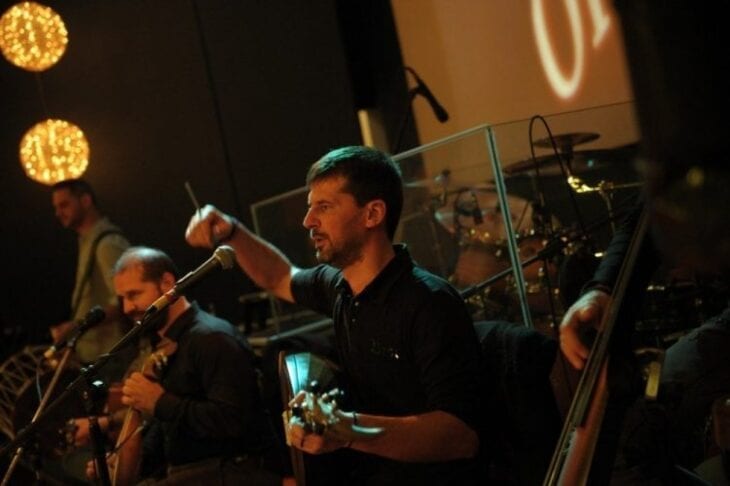
A list of the music bands of Crete is given below.
- Chainides (Χαΐνηδες): Chainides (Χαΐνηδες) was formed in 1990 and is the center of Cretan folk music. They mix traditional instruments like the lyra and laouto with poetic lyrics and experimental elements. Their innovative performances appeal to both older generations and younger audiences.
- Xylouris White: Xylouris White is a duo featuring Giorgis Xylouris (Psarogiorgis) on laouto and Australian drummer Jim White. It fuses Cretan music with experimental rock and improvisation. Albums like Goats (2014) and Black Peak (2016) have received international acclaim for their groundbreaking sound.
- Babel Trio: Babel Trio combines Cretan music with progressive rock, using an electric laouto as the lead instrument. Their fusion of tradition and modernity is showcased in songs like Pacharde, appealing to fans across genres.
- Balothizer: Balothizer is a London-based band known for blending traditional Cretan melodies with heavy rock and metal influences. Their motto, “Cretan Music from Hell,” reflects their intense fusion of laouto, bass, and drums, reimagining Cretan music for global audiences.
- Daulute: Daulute emphasizes improvisation rooted in traditional Cretan styles like syrta. Their song Ftohi Kardia (Poor Heart) highlights their ability to merge vocals, percussion, and woodwinds with classic rhythms.
- Couleur Locale: Couleur Locale is known for live performances at festivals like Houdetsi. They reinterpret traditional songs like Lousakies. Their combination of laouto, bass, and drums produces a modern yet authentic sound.
- Marmaladies: Marmaladies was founded in 2004 in Heraklion. Marmaladies blend funk, psychedelic, and folk influences. Their playful and diverse approach adds a fresh dynamic to Crete’s contemporary music scene.
What are the Popular Dances in Crete?
Popular dances in Crete include Pentozali, a fast-paced war dance symbolizing heroism and freedom; Syrtos, celebrated for its elegance; and Maleviziotis, known for its energetic jumps and complex steps. Sousta, a romantic couple’s dance, mimics courtship, while Siganos embodies unity and resilience. Lassithiotikos Pidihtos reflects eastern Crete’s modesty and dignity through leaping movements.
Cretan dances are often accompanied by traditional music played on instruments like the lyra and laouto and are a highlight of festivals (panigiria), weddings, and other celebrations.
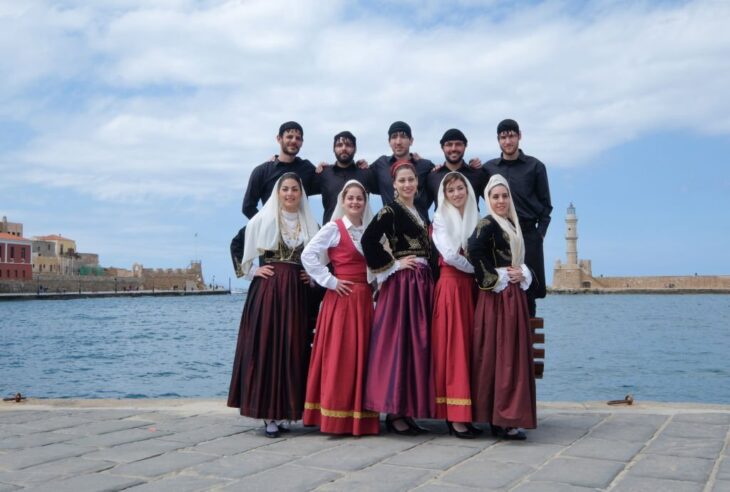
Pentozali, a fast-paced Cretan war dance, symbolizes revolution and heroism. Its five basic steps (pente means “five” in Greek) represent leaps of freedom, making it a hallmark of Cretan identity. Syrtos, or Chaniotikos Syrtos, is an elegant dance reflecting grace and tradition.
Maleviziotis, also called Kastrinos Pidichtos, is one of Crete’s most vigorous dances, characterized by energetic jumps and complex steps. Originating from the Malevizi region near Heraklion, it showcases speed and grace, testing dancers’ stamina and agility. Sousta, a romantic couple’s dance, mimics courtship with playful movements and is often performed at weddings as a celebration of love and union.
Siganos, a slower dance from the Ottoman occupation, represents unity and resilience. Its smooth, deliberate movements often transition into the faster Pentozali. Lassithiotikos Pidihtos, from eastern Crete, is a leaping dance symbolizing the dignity and modesty of the region’s people. It stands out as one of eastern Crete’s most distinctive dances. Siganos is one of the most distinctive traditional Cretan dances.
What are the Music Festivals in Crete?
Crete is home to various music festivals that celebrate its traditional heritage and modern influences. Here are some of the most popular music festivals in Crete:
- Chania Rock Festival: Since 2002, the Chania Rock Festival has been held annually in the historic East Moat Theater in Chania. It is one of Crete’s largest rock events. It features performances by renowned international and Greek rock and metal bands, such as Sabaton and Sisters of Mercy.
- Houdetsi Festival: The Houdetsi Festival is hosted in the village of Houdetsi near Heraklion. It is a celebration of traditional Cretan music and world music. The festival fosters artistic exchange through concerts on multiple stages, workshops, and exhibitions of musical instruments.
- Cretan World Music Festival: The Cretan World Music Festival, held in Chania at venues like the San Salvatore Bastion, blends Cretan traditional music with global sounds. Founded in 2014, it features performances by local and international musicians, art exhibitions, and workshops.
- Matala Beach Festival: Inspired by the hippie culture of the 1960s and 1970s, the Matala Beach Festival takes place on the iconic Matala Beach. It is known for its lively atmosphere, featuring live performances by Greek and international musicians, art exhibitions, workshops, and celebrations of freedom and unity.
- Rokkas Festival: The Rokkas Festival is held in the villages of Rokka and Kera in Chania. This festival combines classical music with traditional Cretan sounds. It takes place under the full moon in August and includes cultural activities and performances by local and international artists in natural settings.
- Vlatos Jazz Festival: The Vlatos Jazz Festival is hosted in Vlatos village in Chania and is dedicated to jazz and world music.
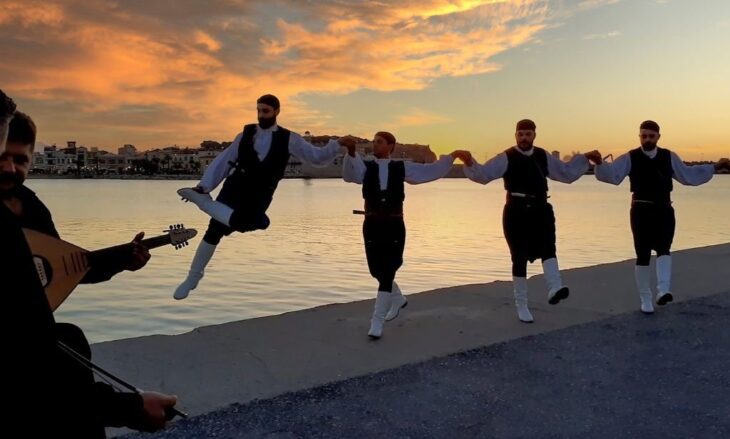
What are the Important Music Institutions in Crete?
Crete hosts important music institutions preserving its musical heritage and fostering innovation. The School of Music and Optoacoustic Technologies at Hellenic Mediterranean University in Rethymno integrates traditional music with modern technologies. The Museum of Traditional Music Instruments “Thirathen” in Heraklion promotes Cretan and Mediterranean music through exhibitions and interactive activities. The Labyrinth Musical Workshop in Houdetsi supports modal music traditions with seminars and artistic exchanges.
Find below a list of the Important Music Institutions in Crete.
- School of Music and Optoacoustic Technologies: The School of Music and Optoacoustic Technologies (Hellenic Mediterranean University) is in Rethymno. This institution includes the Department of Music Technology and Acoustics, which has been active since 1999. It specializes in sound and music technologies, acoustics, and audiovisual techniques. The school bridges traditional music with modern technologies, advancing research and education in these fields and fostering innovation.
- Museum of Traditional Music Instruments “Thirathen”: The Museum of Traditional Music Instruments “Thirathen” is located in Heraklion. The museum documents and promotes Cretan and Mediterranean traditional music. It features a vast collection of Crete, Thrace, Pontus, and Asia Minor instruments. Interactive tours, educational programs, and live performances allow visitors to engage with the history and craftsmanship of traditional instruments.
- Labyrinth Musical Workshop: The Labyrinth Musical Workshop was founded by Ross Daly in Houdetsi near Heraklion. This workshop focuses on modal music traditions from Crete and the Eastern Mediterranean. It offers seminars, masterclasses, and concerts on instruments like the lyra, laouto, oud, and lavta. The Labyrinth Musical Workshop fosters artistic exchange, bringing musicians from diverse backgrounds to explore and innovate within traditional practices.
Last updated on January 8th, 2025








